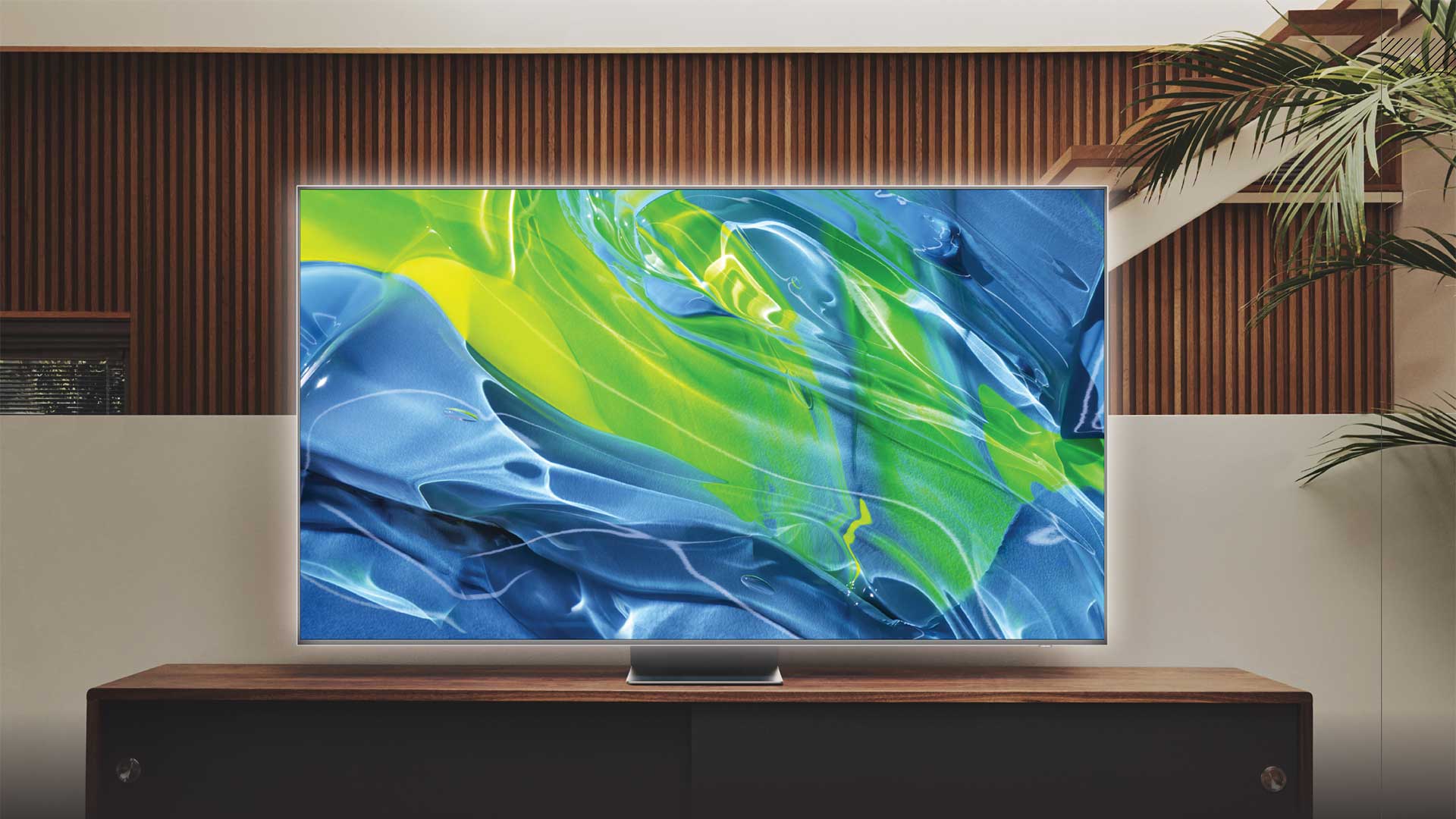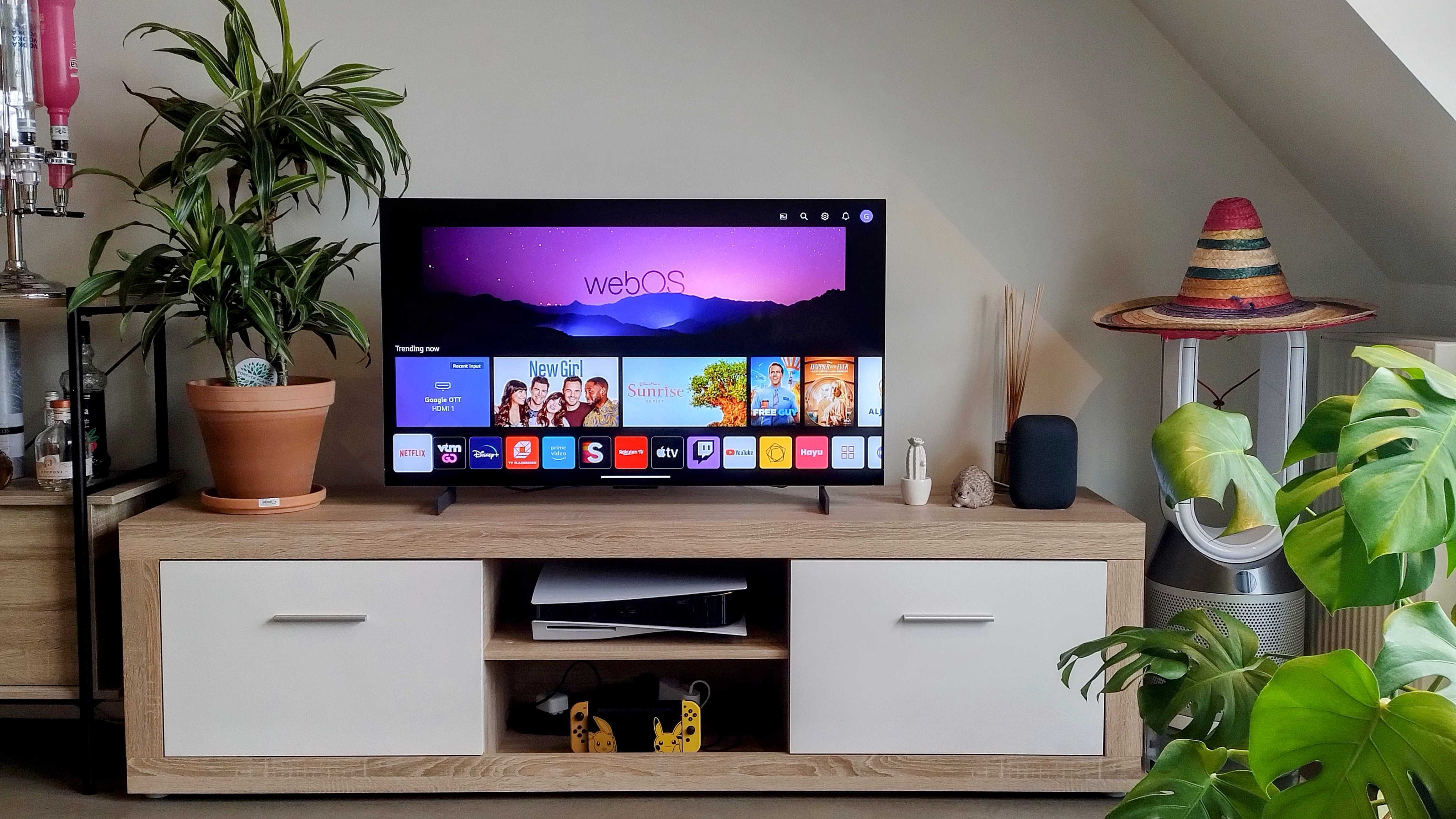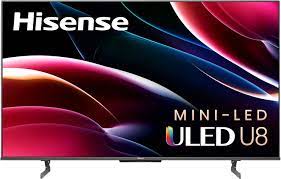2022 in TVs: QD-OLED arrived, while cheap mini-LED thrived
Our TV technology year in review

2022 has been a bumper year for televisions. While most new TV screens are largely iterative versions of years past, this time around we saw a number of new panel technologies come to market, shaking up the kinds of screen on offer – and yes, making buying a good TV that much more complicated.
Between QD-OLED, mini-LED, and regular OLED, there’s a medley of premium sets out there – with increasingly cheaper options that still make use of these high-end technologies. There’s never been a better time to buy one of the best TVs, and the options really are dazzling, whether you’re keen on a super-sized 8K screen or a mid-sized gaming TV.
As we look back over the past year, mulled wine in hand, it’s clear that there are a few key events in the TV calendar that 2023 will find hard to beat.
The QD-OLED evolution
There’s no doubt about it – the biggest shake-up to the TV market in 2022 was QD-OLED.
We’ve been talking about the long-rumored QLED-OLED hybrid for years now. Currently sold by Samsung and Sony, these screens attempt to utilize the best parts of both technologies, with the self-emissive perks of OLED, as well as the enhanced color and brightness capability of quantum dot (QLED).
The result? A resounding success, by the looks of it. In our 2022 review of the Samsung S95B QD-OLED TV, we praised it for “a combination of brightness, black depth, contrast and color that we just haven’t seen before on a consumer set”. You’ll need to tweak the picture presets a little to get optimum results, but still, it’s a huge achievement that these competing technologies were able to blend into a single screen, after years of heated OLED vs QLED debates.
So what does this mean for OLED? Starting at around $1,450 / £1,299 / AU$3,499, Samsung’s combo-screen is a little pricier than some of the best OLED TVs, like the popular LG C2, so OLED may have a good enough head start for now. OLED picture quality is still breathtakingly good, at increasingly lower prices, and if you can deal with its comparative brightness limitations there’s very little that needs improving.
Get daily insight, inspiration and deals in your inbox
Sign up for breaking news, reviews, opinion, top tech deals, and more.
But if Samsung can keep developing the technology and make it truly cost-effective, it could well replace its predecessor. We’ll no doubt see the consequences of Samsung’s QD-OLED launch more clearly in a few years’ time.

Small 4K TVs vs 8K behemoths
Just when we thought OLED TVs couldn’t get any smaller, the 42-inch LG C2 released to market, with the same Alpha a9 Gen. 5 processor, 4K resolution, 120Hz frame rate, and HDMI 2.1 connection support as its larger counterparts – an astonishing amount of premium TV tech in a very discrete size.
This is probably as small as OLED TVs will go for now, but a screen size flexibility that almost matches regular LCD-LED displays will certainly help to ensure OLED’s longevity for quite a while yet.
What the 42-inch OLED TV does represent is a recognition that not every shopper is looking for the biggest screen they can. Some consumers have small homes, watch their TV solo, or want a screen that doesn’t take up half the wall space. Compact screens with a high-quality picture are a great thing for the market, and go against the trend towards ever-larger screens with pixel counts in the tens of millions.
While 8K resolution may sound impressive, there’s a lot more to a TV’s picture than the quantity of pixels – and it’s telling that the 8K rush Samsung started a few years back is starting to give way to the emergence of other technologies. Such as…

The rise of cheap mini-LED screens
2022 truly is the year of mini-LED. This TV technology has been enthusiastically embraced by all the biggest TV brands, coming to cheaper screens than ever before.
While TCL and Samsung were the earliest mainstream adopters, even OLED apostles like LG are now in on the action (albeit with an exhaustingly-named ‘QNED’ range) and it’s clear the technology is here to stay.
Mini-LED backlights use tens of thousands of tiny LEDs to illuminate onscreen images – vastly outshining traditional LED lighting arrangements. This enables a huge level of brightness control, allowing a TV’s processor to better coordinate where light should be on the screen, and where it shouldn’t, with the nits needed to really make the difference clear.
Not all mini-LED is the same, mind, and the trouble for shoppers now is distinguishing between the many different TV ranges on offer. Samsung uses mini-LED to power its high-end Neo QLED range, topping out at around $8,500 / £7,000 / AU$12,000, but starting at only $1,099 / £999 (around AU$1,650) for a compact, 43-inch screen (the QN90B). LG’s OLED and mini-LED ranges sit pretty much side by side, but include a 55-inch mini-LED display (the QNED85) for a similar $999 figure, while Hisense does the same with its new U8H model – even if the company would rather you spent the cash on its flight-of-fancy Laser TVs.
Dropping to three-figure sums was a huge breakthrough for OLED TVs, and we’re now on the cusp of a similar achievement for mini-LED – a screen-brightening backlight technology whose time really has come. Time will tell whether QD-OLED even gets a foot in the door, with mini-LED currently dominating the shelves, and set to get even cheaper in 2023.
There are countless small changes in the TV market we don’t have space to cover in detail here: ever-lighter chassis for OLED screens, premium gaming specifications getting more widely standardized, and the HDMI 2.1 standard becoming all but default on mid-range screens and above. But the biggest trends were towards better, brighter pictures, with mini-LED and a new OLED hybrid lighting the way forward. And for that, we are thankful.
Henry is a freelance technology journalist, and former News & Features Editor for TechRadar, where he specialized in home entertainment gadgets such as TVs, projectors, soundbars, and smart speakers. Other bylines include Edge, T3, iMore, GamesRadar, NBC News, Healthline, and The Times.
